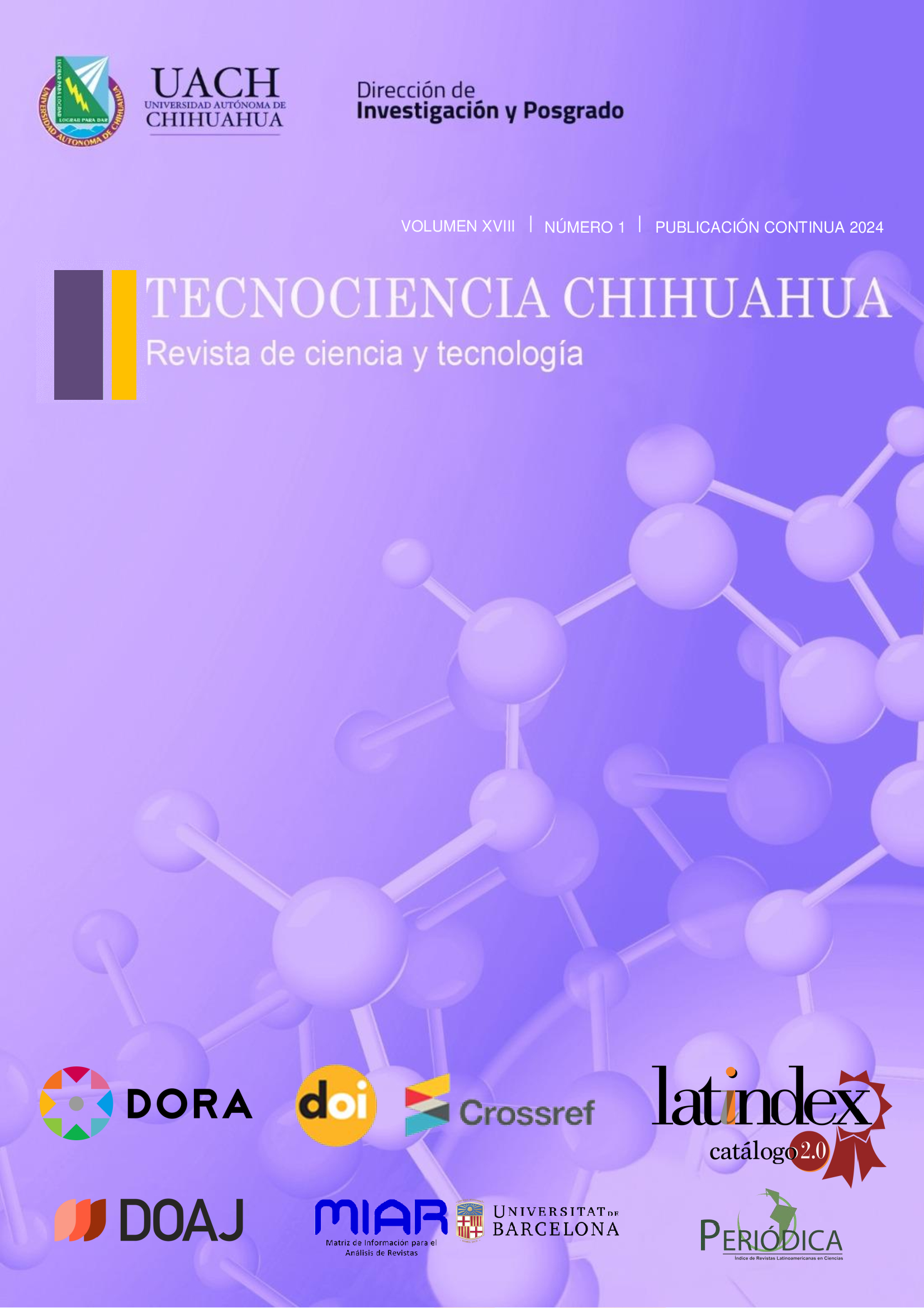Eficiencia antiinflamatoria de dexametasona 1.0 mg/ml vs bromfenaco 0.9 mg/ml administrados previo a la facotrabeculectomía en pacientes con Glaucoma
Anti-inflammatory efficacy of dexamethasone 1.0 mg/ml vs bromfenac 0.9 mg/ml administered prior to phacotrabeculectomy in patients with Glaucoma
Resumen
El tratamiento del glaucoma se realiza mediante medicamentos tópicos y sistémicos, láser o cirugía. El control de la inflamación es fundamental para la curación después de la cirugía. Nuestro objetivo fue comparar la eficiencia del uso de dexametasona vs bromfenaco como antiinflamatorios prequirúrgicos. Se realizó un ensayo clínico controlado, aleatorizado y no ciego, se incluyeron pacientes que acudieron al servicio de oftalmología del Hospital Civil de Culiacán con glaucoma primario, de noviembre a diciembre de 2022. Mediante una tabla de aleatorización se asignaron de la siguiente manera: Grupo 1, dexametasona oftálmica 1.0 mg/ml; Grupo 2, bromfenaco oftálmico 0.9 mg/1ml; ambos una semana antes de la cirugía. Se clasificaron según la escala de Wuerzburg al día 7 y 30 postquirúrgico, para valorar la ampolla filtrante. Resultados: se incluyeron un total de 30 ojos, 15 en el grupo 1 y 15 en el grupo 2. La puntuación en el grupo 1 el día 7 postquirúrgico fue de 6.8±1.6 y en el grupo 2 fue de 7.5±2 (p=0.267). En el día 30 postquirúrgico, la puntuación fue de 6.5±2 en el grupo 1 y 7.2 ±1.7 en el grupo 2 (p=0.288). No se presentó significancia estadística entre los tratamientos, ambos son efectivos para la formación de la ampolla filtrante.
Citas
Almatlouh, A., Bach-Holm, D. & Kessel, L. (2019). Steroids and nonsteroidal anti-inflammatory drugs in the postoperative regime after trabeculectomy – which provides the better outcome? A systematic review and meta-analysis. Acta Ophthalmologica 97(2): 146–157. https://doi.org/10.1111/aos.13919
Breusegem, C., Spielberg, L., Van Ginderdeuren, R., Vandewalle, E., Renier, C., Van De Veire, S., Fieuws, S., Zeyen, T. & Stalmans, I. (2010). Preoperative nonsteroidal anti-inflammatory drug or steroid and outcomes after trabeculectomy: A randomized controlled trial. Ophthalmology 117(7): 1324–1330. https://doi.org/10.1016/j.ophtha.2009.11.038
Furino, C., Boscia, F., Cicinelli, M. V., Sborgia, A. & Alessio, G. (2016). Subconjunctival sustained-release dexamethasone implant as an adjunct to trabeculectomy for primary open angle glaucoma. Indian Journal of Ophthalmology 64(3): 251–252. https://doi.org/10.4103/0301-4738.181735
Furrer, S., Menke, M. N., Funk, J. & Töteberg-Harms, M. (2012). Evaluation of filtering blebs using the Wuerzburg bleb classification score compared to clinical findings. BMC Ophthalmology 12:24. https://doi.org/10.1186/1471-2415-12-24
Groth, S. L., Albeiruti, E., Nunez, M., Fajardo, R., Sharpsten, L., Loewen, N., Schuman, J. S. & Goldberg, J. L. (2019). SALT Trial: Steroids after Laser Trabeculoplasty: Impact of Short-Term Anti-inflammatory Treatment on Selective Laser Trabeculoplasty Efficacy. Ophthalmology 126(11): 1511–1516. https://doi.org/10.1016/j.ophtha.2019.05.032
Jóhannesson, G., Gottfredsdóttir, M. S., Ásgrimsdóttir, G. M., Loftsson, T. & Stefánsson, E. (2020). Can postoperative dexamethasone nanoparticle eye drops replace mitomycin C in trabeculectomy? Acta Ophthalmologica 98(6):607-612. https://doi.org/10.1111/aos.14370
Levkovitch-Verbin, H., Katz, G., Kalev-Landoi, M. & Goldenfeld, M. (2013). Postoperative treatment with topical diclofenac versus topical dexamethasone after combined phacotrabeculectomy with mitomycin C. Journal of Glaucoma 22(3): 177–182. https://doi.org/10.1097/IJG.0b013e318237bf9e
London, N. J. S., Chiang, A. & Haller, J. A. (2011). The dexamethasone drug delivery system: Indications and evidence. Advances in Therapy 28(5): 351–366. https://doi.org/10.1007/s12325-011-0019-z
Lusthaus, J. A., Kubay, O., Karim, R., Wechsler, D. & Booth, F. (2010). Primary trabeculectomy with mitomycin C: Aafety and efficacy at 2 years. Clinical and Experimental Ophthalmology 38(9): 831–838. https://doi.org/10.1111/j.1442-9071.2010.02349.x
McMonnies, C. W. (2017). Historial de glaucoma y factores de riesgo. Journal of Optometry 10(2): 71-78. https://doi.org/10.1016/j.optom.2016.02.003
Murthy, G., Ariga, M., Singh, M., George, R., Sarma, P., Dubey, S., Choudhry, R., Parikh, R. & Panday, M. (2022). A deep dive into the latest European Glaucoma Society and Asia-Pacific Glaucoma Society guidelines and their relevance to India. Indian Journal of Ophthalmology 70(1): 24–35. https://doi.org/10.4103/ijo.IJO_1762_21
Pereira, I. C. F., Wyss, H. M., Pinchuk, L., Beckers, H. J. M. & Den Toonder, J. M. J. (2022). A model for designing intraocular pressure-regulating glaucoma implants. PLoS ONE 17(9): e0273672. https://doi.org/10.1371/journal.pone.0273672
Pérez Rangel, Y., Fumero González, F. Y., Álvarez Cisneros, G. A. & Elena Rangel Hernández, M. (2020). Revista Cubana de Oftalmología 33(4): e1002 https://revoftalmologia.sld.cu/index.php/oftalmologia/article/view/1002
Saeed, E., Gołaszewska, K., Dmuchowska, D. A., Zalewska, R. & Konopińska, J. (2023). The PreserFlo MicroShunt in the Context of Minimally Invasive Glaucoma Surgery: A Narrative Review. In International Journal of Environmental Research and Public Health 20(4): 2904 https://doi.org/10.3390/ijerph20042904
Sasase, T., Fatchiyah, F. & Ohta, T. (2023). Retinal Ganglion Cell Death of Guinea Pig is Slower Than Rat as Optic Nerve Transection Animal Model. JSMARTech Journal of Smart Bioprospecting and Technology 4(1): 4-8. https://doi.org/10.21776/ub.jsmartech.2023.004.01.04
Wang, H. W., Sun, P., Chen, Y., Jiang, L. P., Wu, H. P., Zhang, W. & Gao, F. (2018a). Research progress on human genes involved in the pathogenesis of glaucoma (Review). Molecular Medicine Reports 18(1): 656–674. https://doi.org/10.3892/mmr.2018.9071
Weinreb, R. N., Aung, T. & Medeiros, F. A. (2014). The pathophysiology and treatment of glaucoma: A review. JAMA. Clinical Review & Education 311(18): 1901–1911. https://doi.org/10.1001/jama.2014.3192
Yamanaka, O., Kitano-Izutani, A., Tomoyose, K. & Reinach, P. S. (2015). Pathobiology of wound healing after glaucoma filtration surgery. BMC Ophthalmology 15(1): 19–27. https://doi.org/10.1186/s12886-015-0134-8
Yuen, D., Buys, Y., Jin, Y. P., Alasbali, T., Smith, M. & Trope, G. E. (2011). Corticosteroids versus NSAIDs on intraocular pressure and the hypertensive phase after ahmed glaucoma valve surgery. Journal of Glaucoma 20(7): 439–444. https://doi.org/10.1097/IJG.0b013e3181efbec0
Zada, M., Pattamatta, U. & White, A. (2018). Modulation of Fibroblasts in Conjunctival Wound Healing. Ophthalmology 125(2): 179–192. https://doi.org/10.1016/j.ophtha.2017.08.028
Derechos de autor 2024 TECNOCIENCIA Chihuahua

Esta obra está bajo licencia internacional Creative Commons Reconocimiento-NoComercial 4.0.









